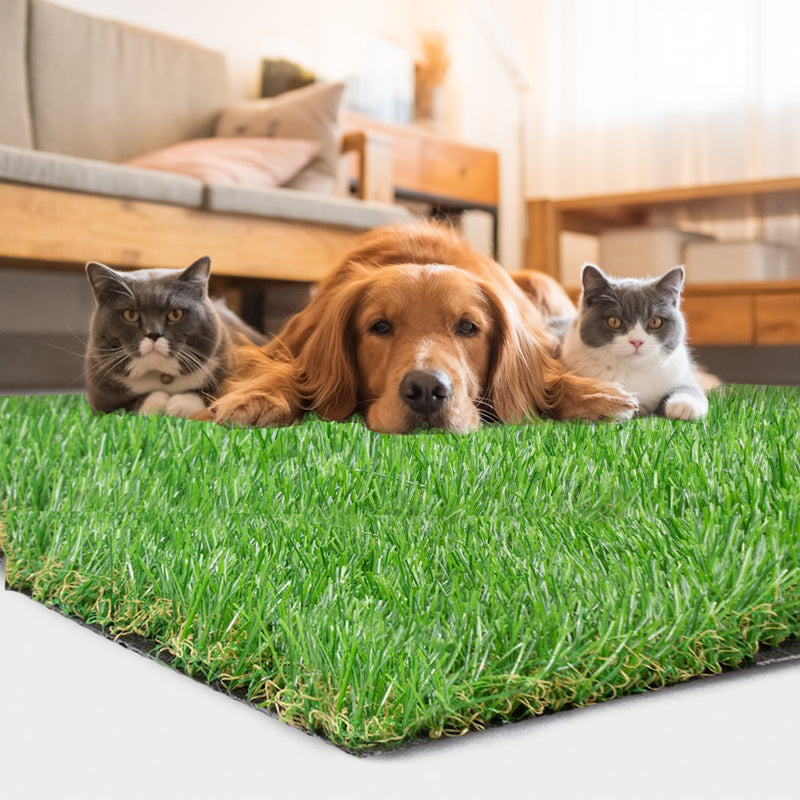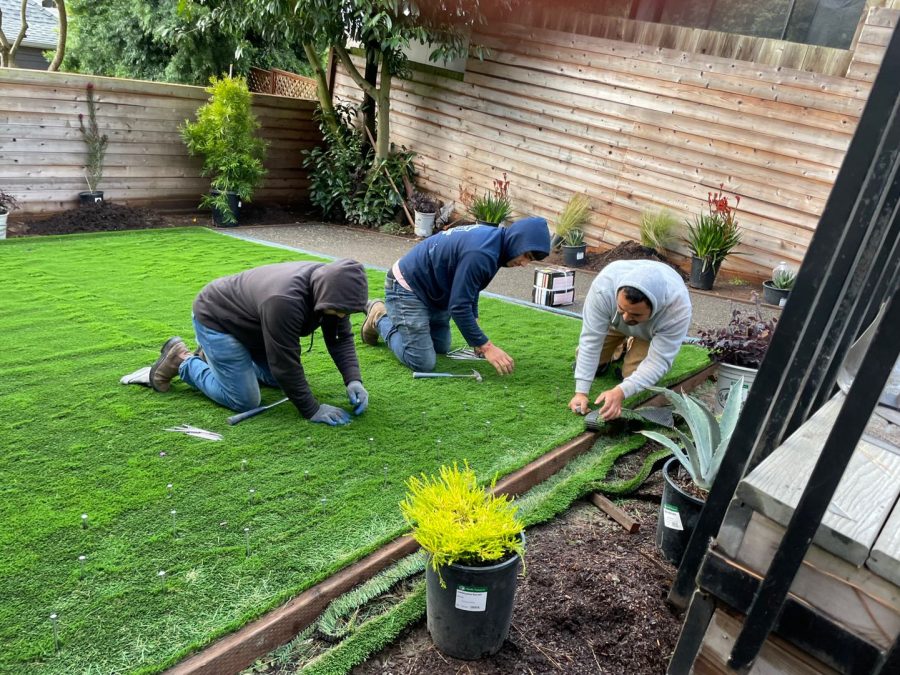Eco-Friendly Arizona Artificial Turf for a Year-Round Lush Green Lawn
Eco-Friendly Arizona Artificial Turf for a Year-Round Lush Green Lawn
Blog Article
Look Into the Environmental Advantages of Opting for Synthetic Grass Solutions
The fostering of man-made lawn options provides a compelling possibility to address pressing environmental difficulties. By significantly decreasing water usage and minimizing the application of hazardous chemicals, these options not only promote sustainable landscaping however likewise safeguard neighborhood ecological communities. Furthermore, the reduced carbon footprint connected with lowered upkeep activities adds to an extra sustainable technique to land management. The implications of these benefits expand past plain preservation efforts, increasing concerns concerning their long-lasting influence on environment preservation and total environmental balance. Discovering these dimensions exposes a complicated interplay worth thinking about.
Water Preservation Advantages
One of the most considerable benefits of synthetic grass is its ability to conserve water. Standard grass lawns call for substantial watering, especially in areas prone to dry spell or water restrictions. On the other hand, synthetic grass does not need watering, considerably lowering the total need for water resources. This function is specifically beneficial in deserts where water deficiency is a pushing worry.
By removing the requirement for routine watering, synthetic grass adds to lasting landscape methods and aids alleviate the ecological effect of excessive water consumption. The conservation of water expands to the decrease of runoff, which can lead to soil erosion and waterway air pollution.
Furthermore, the installation of synthetic grass enables property owners and municipalities to allocate water sources extra effectively, concentrating on essential uses such as alcohol consumption water and farming. The change in the direction of synthetic grass not only advertises accountable water use yet additionally lines up with broader ecological objectives targeted at maintaining natural sources.
As areas progressively prioritize sustainability, the water conservation benefits of man-made lawn present an engaging case for its fostering in commercial and residential landscaping projects.
Minimized Chemical Use
The change to synthetic grass dramatically decreases the dependence on chemical therapies typically made use of in natural grass maintenance. Conventional turf management typically entails the application of herbicides, plant foods, and pesticides to promote growth and control parasites. These chemicals can pose risks to human wellness, local wild animals, and the atmosphere, adding to soil and water contamination.
On the other hand, synthetic grass eliminates the requirement for these hazardous materials. Once mounted, it calls for marginal upkeep, mainly being composed of normal cleansing and irregular infill replenishment. This reduction in chemical usage not only profits the instant environment however also adds to more comprehensive eco-friendly stability. By reducing the launch of synthetic substances right into the environment, synthetic grass promotes healthier dirt and water supply.
Additionally, the absence of chemical overflow connected with man-made grass setups assists safeguard regional rivers from pollution, supporting aquatic life and preserving biodiversity. Phoenix turf companies. As areas progressively prioritize lasting methods, selecting fabricated lawn offers a viable service that aligns with ecological preservation objectives. Through this shift, homeowner can appreciate lavish environment-friendly rooms without compromising environmental health, leading the method for an extra sustainable future
Reduced Carbon Footprint

Moreover, the installment of synthetic turf can lead to substantial water conservation. Natural lawns require significant quantities of water for watering, which not just includes in the carbon impact linked with water extraction and therapy but additionally strains regional water sources. On the other hand, synthetic grass requires marginal maintenance, needing no watering, thus significantly decreasing water usage and its associated power costs.
Furthermore, the long life of synthetic lawn adds to its reduced carbon impact. With a lifespan of as much as 15 years or even more, the demand for frequent replacements is decreased, resulting in less waste and lower power intake in production and taking care of conventional grass options. In general, synthetic grass offers a sustainable option for environmentally aware landscaping.
Habitat Preservation
Habitat preservation is a vital factor to consider in the dispute over landscaping options, especially when contrasting man-made grass to all-natural yard. Natural turf yards typically require substantial upkeep, consisting of using herbicides, fertilizers, and pesticides, which can adversely influence local ecological communities. These chemicals can seep right into the soil and rivers, hurting native flora and fauna and interrupting regional environments.
Synthetic turf eliminates the need for damaging chemicals, consequently safeguarding close-by wild animals and maintaining the stability of surrounding communities. The installation of fabricated turf can lead to the conversion of previous grass areas right into even more biodiverse landscapes, such as pollinator yards or indigenous plant areas, which can sustain neighborhood wildlife.
Inevitably, the transition to synthetic turf not only conserves water and decreases maintenance efforts however additionally cultivates a much more harmonious partnership in between human activities and the natural surroundings, promoting habitat conservation while doing so.
Long-Term Sustainability
Long-term sustainability is an essential consider evaluating the benefits of synthetic grass over conventional turf lawns. Among the most significant advantages of synthetic grass is its durability; it can last approximately 15-20 years with marginal maintenance, whereas all-natural yard calls for constant reseeding and replacement. This long life lowers informative post the demand for continuous resources, such as water, plant foods, and chemicals, which are necessary for see this site preserving a healthy turf yard.
Additionally, synthetic grass adds to a reduction in carbon emissions related to yard care devices. Traditional grass commonly call for gas-powered mowers, trimmers, and blowers, every one of which add to air contamination. Phoenix turf companies. On the other hand, synthetic grass eliminates the requirement for such tools, promoting a cleaner setting
Moreover, the manufacturing of synthetic grass increasingly uses recycled materials, boosting its sustainability profile. As suppliers take on environmentally friendly methods, the ecological footprint of artificial turf remains to lessen.

Verdict
The adoption of synthetic grass remedies offers substantial environmental benefits, including significant water preservation, lowered reliance on hazardous chemicals, and a reduced carbon impact. Man-made lawn aids in preserving natural habitats by reducing land disturbance and advertising lasting sustainability via the use of resilient products. Jointly, these variables emphasize the capacity of artificial turf to add favorably to ecological health and wellness and use a feasible option to typical landscape design practices in an increasingly resource-conscious world.
In comparison, artificial turf does not require watering, dramatically lowering the general need for water resources. By lessening the release of synthetic substances into the environment, synthetic lawn advertises healthier soil and water systems.
Additionally, the installment of man-made lawn can result in significant water preservation. you can try these out In contrast, synthetic turf requires very little maintenance, requiring no watering, thereby significantly reducing water use and its associated energy costs.

Report this page